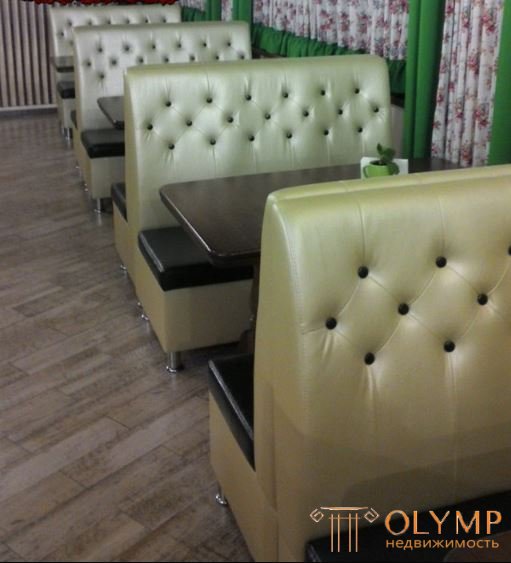
The trends in the artistic design of public furniture are closely related to the nature of the architectural design of a public building and are determined by its purpose. Considering the modern practice of equipping public buildings, we can distinguish three main areas of artistic solution of furniture products.
The first direction can be attributed to those furniture groups, the composition of which is subject to functional requirements. The most characteristic of these groups is furniture for hospital equipment. Furniture for educational institutions is close to them, where functional functionality also dominates the solution of the external appearance of the product (Fig. 108).
Considering the experience of recent years, it can be noted that due to some stability of the function of school furniture products such as student desks, their architectural and artistic solution changes relatively little. The means of artistic expressiveness of school furniture include, for example, a single solution of the supporting frame of the table and chair, the use of a single material for the performance of basic elements and parts. Considering the progressive experience of designing school furniture, it can be noted that the most powerful artistic tool is its color solution. Color in the life of a child, as already noted, plays a big role. Studies in this area, conducted over the past decades, have shown that it is impossible to arbitrarily approach the choice of furniture color for school premises. The selection of colors in the interior of the school building is chosen so as to contribute to the creation of an enabling environment for training and other classes in the school.

Fig. 1. School furniture - an example of the dominance of utilitarian requirements for the solution of furniture products (Sweden)
The most important progressive trend in the design of school furniture is the inextricable link between its solution and the general artistic design of the interior. Although the furniture must first of all meet the functional requirements, it is one of the main means of the architectural and artistic solution of the modern interior of the school building. Equipping school premises with a single and complete set of furniture allows us to ensure normal educational work and solve interiors in the same style.
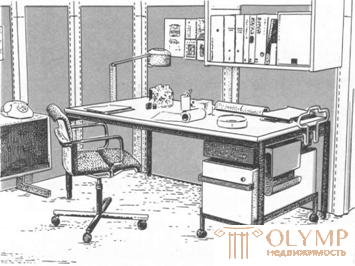
Fig. 2. Furniture of administrative buildings (Sweden)
The functional approach is also characteristic of the solution of most groups of administrative furniture (Fig. 2). At the same time, in modern domestic and foreign practice, with a very accurate account of the functional features of the use of a furniture product, which is mainly reflected in its general device and in the device of its parts and elements, a wider and more diverse use of color is often sought: sometimes contrasting. In recent years, there has been a tendency to introduce ornamental elements even in the equipment of administrative buildings, for example, the filling of a dividing partition-screen.
The artistic solution of the furniture of administrative buildings is characterized by the opposition of geometric forms (Fig. 3), for example, a combination of disks of the supports of the chairs with rectangles of seats and backs. Often the soft elements of the armchairs and chairs are made with a line.
The utilitarian approach to solving the external appearance of products is manifested quite clearly in the group of furniture intended for the equipment of audiences. When addressing commercial premises, they strive for maximum product visibility and the creation of conditions for the best display of goods. Hence the use of glass, open shelves, etc.
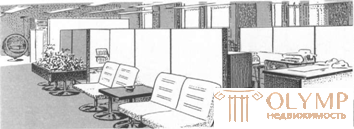
Fig. 3. An example of the artistic solution of furniture of administrative buildings based on the contrast of geometric shapes.
The influence of the purpose of the building on the decision of furniture products is particularly evident in the example of a diverse solution of furniture for catering enterprises. Furniture for the mass type of catering - canteens, where everything is designed for fast food intake and where nothing should be distracting, is produced in light, concise forms, mainly with the use of metal.
The second main direction of the artistic decision of public furniture can be considered the search for such new forms of furniture, which, with full compliance with the purpose of the building, seek to convey its figurative start. Numerous examples of domestic and foreign practice allow us to consider this design trend leading. The conditionality of the furniture solution by the general architectural design of the structure, the nature of its interior can be illustrated with the example of furniture that the “Dipoli” student club in Finland is equipped with. Here the massive, lapidary forms of the chairs, the orange-terracotta color of the upholstery are in perfect harmony with the plastic of the granite rock, introduced into the interior, with the severity of the wooden ceiling lining.
The furniture, which is equipped with a TV hall restaurant in Berlin, can also indicate a figurative approach to the solution of furniture in public buildings.

Fig. 4. Samples of furniture for sitting, created by prominent modern architects: a - Marcel Breer; b - Mies van der Rohe; in - Martigam; Mr. Le Corbusier; d - Charles Eames
The general principles of the formation of modern furniture (functionality, compliance with anthropometric data, ease of construction, etc.) contribute to the diversity of forms and solutions of furniture products. In fig. 111 shows the models of chairs and chairs, created by leading modern architects. The Marcel Breère series is designed on a round metal frame and includes five models of products, a chair without elbows, a chair with elbows, a bench stool, a work chair, a lounge chair. Mies van der Rohe created two models of chairs with and without elbows, which are characterized by extreme laconism and ease of form, on a single supporting metal frame. Similarly, the decision chairs, designed by Martigam. The chair models created by Le Corbusier are distinguished by some geometrism of forms. The lounge chair is designed based on the desire to create maximum comfort. In his series of chairs and armchairs, Charles Eames for the first time developed a technology for manufacturing chairs using polymeric materials. The shape of the seats and backs takes into account the position of the person sitting, the frame is decided to be single-support with the possibility of rotation. The architectural-constructive method found by Eames for the seat was widely developed in the subsequent world practice.
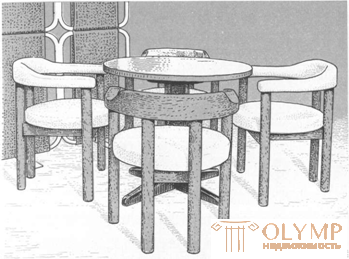
Fig. 5. The original artistic interpretation of wood in a set of furniture for the halls of restaurants
The tendency to search for a variety of new forms in public furniture can be confirmed by numerous examples. This is emphasized by the ascetic, geometric forms of furniture for recreation, designed for halls' equipment (Fig. 5), and products with enriched plastics of basic elements, and chairs for halls of complex plastic forms, indicating their increased comfort.
When creating furniture for public buildings, they strive for an original, memorable solution. This is especially true for chairs and armchairs. An interesting model of chairs with four massive round wooden supports is shown in Fig. five.
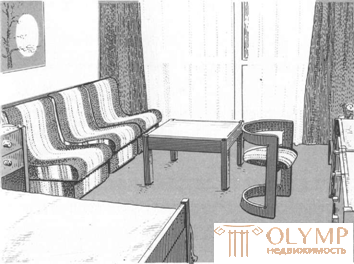
Fig. 6. Hotel furniture upholstery fabric with geometric pattern contrasting in color.
The search for artistic diversity, the individual nature of the furniture product often leads to contrasting forms and contrasting colors. Often used ornamental upholstery materials with a geometric pattern, built on a contrasting contrast of color (Fig. 6).
Along with the traditional methods, modern decoration of furniture products with covering paints of various colors, often bright and local, is widely used in modern practice. In fig. 7 shows a set of furniture for restaurants, wooden products of which are white in color.
The conditionality of the decision of furniture in public buildings by its purpose and architectural solution constantly causes the emergence of new forms, closely related to the new purpose or features of the use of the product. Thus, the evolving trend of organizing separate zones in the dining halls of restaurants has led to the emergence of sets of restaurant furniture, including sofas with high dividing backs (Fig. 8).
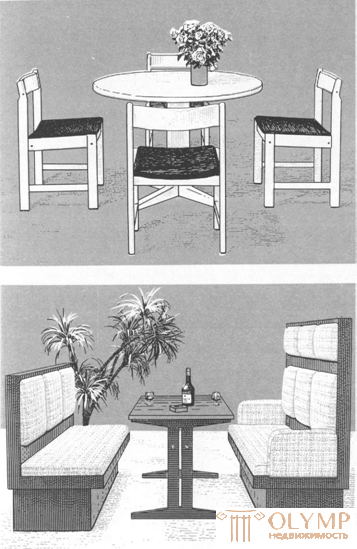
Fig. 7. The use of wooden restaurant furniture with opaque decoration of facial surfaces.

Fig. 8. A set of restaurant furniture with sofas, equipped with high backs.

Fig. 9. Transformable meeting table (FRG): a - general view; b - options combinations
The trend towards universal use of public spaces is the reason for the proliferation of transformable and collapsible products. In fig. 9 shows a convertible meeting table. Its main elements of a rectangular and segmentation-like shape make it possible to create tables of various shapes and sizes, organically fitting into the interior of the administrative room.
In fig. 10 shows the possibility of arranging in the premises of public buildings recreation areas and waiting with the help of two interlocking elements: a chair and a table, having the form of a segment. The use of unified elements allows you to create spatially different groups of furniture.
In fig. 11 shows a new transformable design of dining tables for restaurants, proposed by the English architect Luca Melinger. Folding products are usually made in light, elegant forms (Fig. 119).
In the residential rooms of hotels, in which the rational use of the area of the room is very important, the integration of furniture into single blocks gets a big development. In fig. 120, for example, it is shown that a sleeping place with a cabinet, a place for a suitcase and a working (toilet) table can be solved as a single volume. The impression of solidity is facilitated by a variety of means: clearly defined horizontal thrusts, bright white coloring of elements (for example, drawers), general proportions of all products.
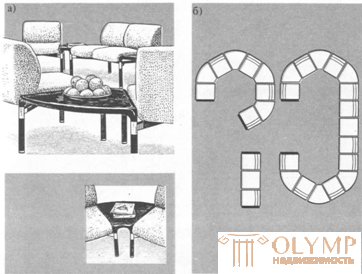
Fig. 10. Variant solution of furniture for perfume (Germany): a - general view; b - options combinations
Furniture for hairdressers, on the contrary, should create isolated zones. For this purpose, closed forms are often used, a combination of differently treated products of the same purpose.
In modern architectural practice, various types of cooperative buildings are becoming more common, which combine public spaces for various purposes. It is possible to list public centers, which include premises for cultural and trade and consumer services: cinema and concert halls, club rooms, canteens, cafes, shops, liaison offices, etc. The trade and service enterprises unite in the shopping centers. All modern large public buildings include public spaces of various purposes. For example, hotels consist of rooms for housing (rooms), for meals (restaurants, cafes, bars, etc.), for waiting (halls), cultural entertainment (cinema and concert halls) and business premises. Higher education institutions include not only classrooms (classrooms, laboratories, classrooms, etc.), but also facilities for eating, relaxing, and so on.
Therefore, for modern practice it is especially important to create a single, integrated furniture series for equipping public buildings (this applies to the choice of rational types of furniture products, to the unification of their sizes, the generality of the architectural and design solution and a single artistic characteristic).
New trends in the development of architecture of public buildings not only necessitated a comprehensive solution of series and sets of furniture, but also influenced the decision of individual products. Thus, transformable products of universal application are becoming increasingly widespread. One of the interesting examples of a series of furniture for universal use is shown in Fig. 16. Chairs in the form of blocks that unite the two seats and have a developed upper plane of the back, are used in a variety of public buildings: at train stations, consumer services, even in educational institutions. Here, the main means of artistic expression is the variability of products, the possibility of various combinations of elements.
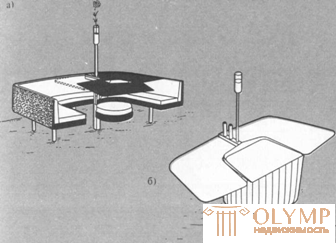
Fig. 11. Transformable furniture products for public buildings: a, b - table options with reversible and retractable lids
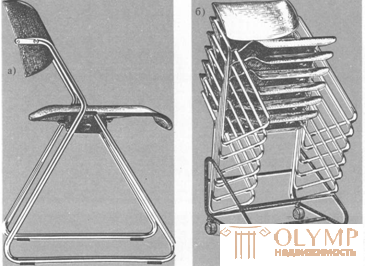
Fig. 12. Metal folding chair (Germany): a - general view; b - chairs in packs
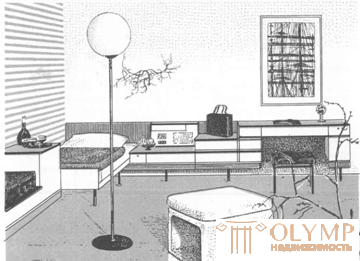
Fig. 13. An example of a blocked solution of hotel furniture.
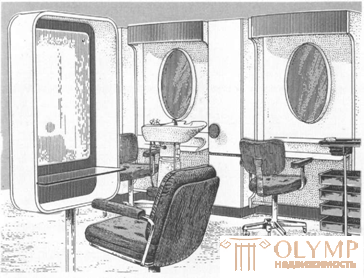
Fig. 14. Application in furniture for hairdresser's closed plastic forms (Italy)
The universal use of premises in modern public buildings caused the emergence of folding and storage furniture. Collapsible structures are also widely used, especially in exhibition and shop equipment.
The desire to create a free flexible layout in public buildings, to use space more efficiently, contributes to the development of embedded equipment in a number of public buildings (administrative, educational, hospital).
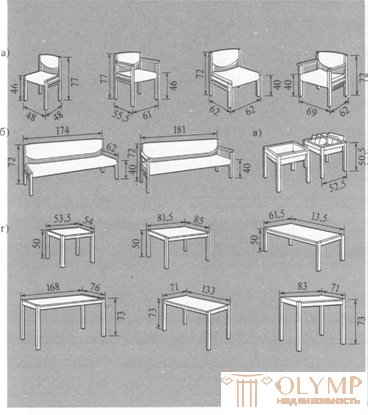
Fig. 15. An example of a complex series of public furniture: a - chairs, armchairs; b - sofas; in - flower girls; g - tables
For those public buildings, whose task is to create a characteristic, romantic atmosphere, furniture design goes in the third direction - furniture design in a specific characteristic style. This direction can be traced on the example of furniture for catering establishments, hotels.
Catering establishments (canteens, cafes, snack bars, restaurants, bars, etc.) have a dual functional purpose: they are a place of eating, as well as a place of rest and entertainment. Depending on what function is preferred or in what ratio these functions are, this or that food item as a whole and its interiors are decided.

Fig. 16. A series of furniture of universal application (Germany): a, b, 8 - options for seats; g - flower girls; d - example arrangement
Of particular importance is the decision of the interiors of catering, arranged in old, with a certain architectural and historical value of buildings. Here the interior should contribute to the correct perception of the architecture, which is the object of inspection.
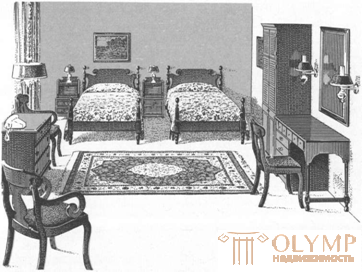
Fig. 17. Hotel room furniture, solved in traditional forms
In such interiors, all the constituent elements, including furniture, have a certain artistic characteristic, emphasizing a common solution. In order to achieve the maximum artistic effect when solving interiors, stylistic unity becomes most important.
In a number of countries, it is widely practiced for recreational catering enterprises to create a single stylistic character for the interior, and often the entire structure. The most common is the choice of style characteristics in the spirit of folk architecture or in the spirit of a past architectural style.
Despite the tendency of the style decision of furniture in domestic and foreign practice, it cannot be considered leading even for catering enterprises, let alone other mass types of public buildings. Stylistic approach to the solution of furniture can be applied only for a narrow circle of interiors.
Что бы оставить комментарий войдите
Комментарии (0)